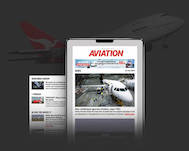A future high-speed rail link could see passengers travel from Newcastle to Western Sydney Airport (WSI) in 90 minutes, the Transport Minister has said.
Speaking at The Australian Financial Review Infrastructure Summit in Sydney, Minister Catherine King said the Sydney to Newcastle high-speed rail line – which the government hopes will run to WSI by 2042 – will offer significant benefits for travellers.
This content is available exclusively to Australian Aviation members.
A monthly membership is only $5.99 or save with our annual plans.
- Australian Aviation quarterly print & digital magazines
- Access to In Focus reports every month on our website
- Unlimited access to all Australian Aviation digital content
- Access to the Australian Aviation app
- Australian Aviation quarterly print & digital magazines
- Access to In Focus reports every month on our website
- Access to our Behind the Lens photo galleries and other exclusive content
- Daily news updates via our email bulletin
- Unlimited access to all Australian Aviation digital content
- Access to the Australian Aviation app
- Australian Aviation quarterly print & digital magazines
- Access to In Focus reports every month on our website
- Access to our Behind the Lens photo galleries and other exclusive content
- Daily news updates via our email bulletin
“Travel time from Newcastle to Parramatta would drop from two and a half hours to around an hour and fifteen minutes. Newcastle to Western Sydney International in around an hour and a half, down from over three hours today,” Minister King said.
“This isn’t just about faster trains. It’s about better connecting our regional centres to our cities and making it easier for people to live and work where they want to. It’s about unlocking productivity and creating new jobs and industries by better integrating our Newcastle to Sydney economies.
“And it’s about recognising that Western Sydney International and Parramatta aren’t peripheral to our transport future, they’re central to it.”
In a business case released this month, Infrastructure Australia noted plans for six stations on the initial Sydney to Newcastle stage of the east coast high-speed rail project: Newcastle, Lake Macquarie, the Central Coast, Sydney Central, Parramatta, and WSI.
The goal is for the line to eventually link Brisbane to Melbourne via Sydney and Canberra with trains travelling at speeds of around 200km/h in tunnelled sections and higher speeds elsewhere.
In her speech, the Transport Minister noted that the “costs and the complexity” of high-speed rail will also be substantial.
“The project will require significant workforce capacity over an extended construction period. It will need careful integration with existing transport networks. And it will demand sustained commitment across multiple terms of government,” she said.
“This is exactly why our reformed approach matters. Projects of this scale can’t be announced on a whim. They need rigorous business case development, proper planning, realistic costing, and honest assessment of delivery timeframes and market capacity.”
WSI will have motorway and bus connections when it opens next year, but a planned metro line connecting it and the new Bradfield “aerotropolis” to the Sydney Trains network at St Marys may not be ready until 2027.
Speaking to Australian Aviation earlier this year, WSI chief executive Simon Hickey said the airport is planning for a potential delayed metro opening.
“Certainly we’re looking at the timing of the opening of the metro, and depending on where that lands, if it’s not on time when we open, we’ll certainly have contingency plans in place that will ensure that people can get to and from St Marys on a regular basis with very easy travel,” he said.
In January, the NSW government showcased a mock-up of one of the cars on the airport metro. Its 12 trains will feature wider aisles for luggage as well as other features, including digital displays of flight information. It would be capable of moving 7,740 passengers in each direction per hour.
The state and federal governments have also committed $195 million to a joint business case for future rail extensions in Sydney’s west.





